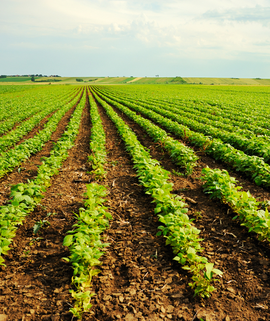The Current State & Future Outlook of the Ag Economy
Listen to the full interview on Compeer’s What’s Next? Agricultural Podcast.
The ag economy has experienced significant changes in recent years, with both positive and challenging trends impacting farmers and rural communities. The past three years have brought solid numbers for grain farming balance sheets, but livestock-focused operations have faced profitability challenges.
Inflation in farming has become a significant concern, affecting interest costs, input costs and labor expenses. Expectations of interest rate cuts in 2024 have been dampened by recent higher-than-expected inflation numbers. Fixed rates are recommended to provide stability and allow for better budgeting.
Inflation disproportionately affects rural communities, where basic goods account for a significant percentage of total gross income. Additionally, wage inflation has been driving overall inflation, making it challenging for farmers to attract and retain labor without increasing pay.
This is where a strong marketing plan and understanding the cost of production comes in. By locking in contracts and prices, farmers can mitigate the risks associated with fluctuating grain prices. However, the cyclical nature of grain markets and the emotions attached to prices can make marketing easier said than done. Diligently implementing risk management strategies and staying informed about supply and demand nationally and internationally will be crucial for long-term success.
External Factors Influencing the Ag Industry
The ag industry is greatly influenced by external factors – especially by global conflicts and trade policies. Troubles in the Middle East, such as conflicts that affect oil prices and shipping costs, can have a ripple effect on fertilizer prices and overall profitability. Similarly, the ongoing tensions between Russia and Ukraine and the potential for a war between Israel and Iran can disrupt global supply chains and impact the demand for agricultural goods.
China’s role as a major importer of agricultural goods is also a critical factor to monitor. China has been shifting its imports to Brazil, which can affect the competitiveness of U.S. farmers. Understanding the dynamics of global trade and staying informed about geopolitical events can help farmers make informed decisions and adjust their marketing plans accordingly.
Mitigating Risk and Maximizing Profitability
To mitigate risk and maximize profitability, farmers with a strong marketing plan will be a step ahead. Understanding the cost of production and utilizing price contracts can help farmers secure profitable sales and avoid potential losses. Crop insurance is also an important tool for managing risk, providing a safety net in case of unforeseen events such as weather-related crop damage.
Investing in labor-saving technologies and automation can help address the labor shortage issue and improve efficiency. Exploring opportunities to automate tasks that are difficult to find labor for can reduce the reliance on manual labor and increase productivity.
Additionally, investing in facilities and farmland can be a sound decision, provided that the financials pencil out positively. Farmland values have strong underlying support and strategic investments can contribute to long-term growth and profitability.
Navigating the challenges and uncertainties in the ever-changing ag economy requires a keen focus. By implementing strong risk management plans, understanding the cost of production and staying informed about global events, farmers can mitigate risks and make informed decisions.
For more information and personalized guidance, reach out to your local Compeer office.
-270x321-1b07ec4.png)
